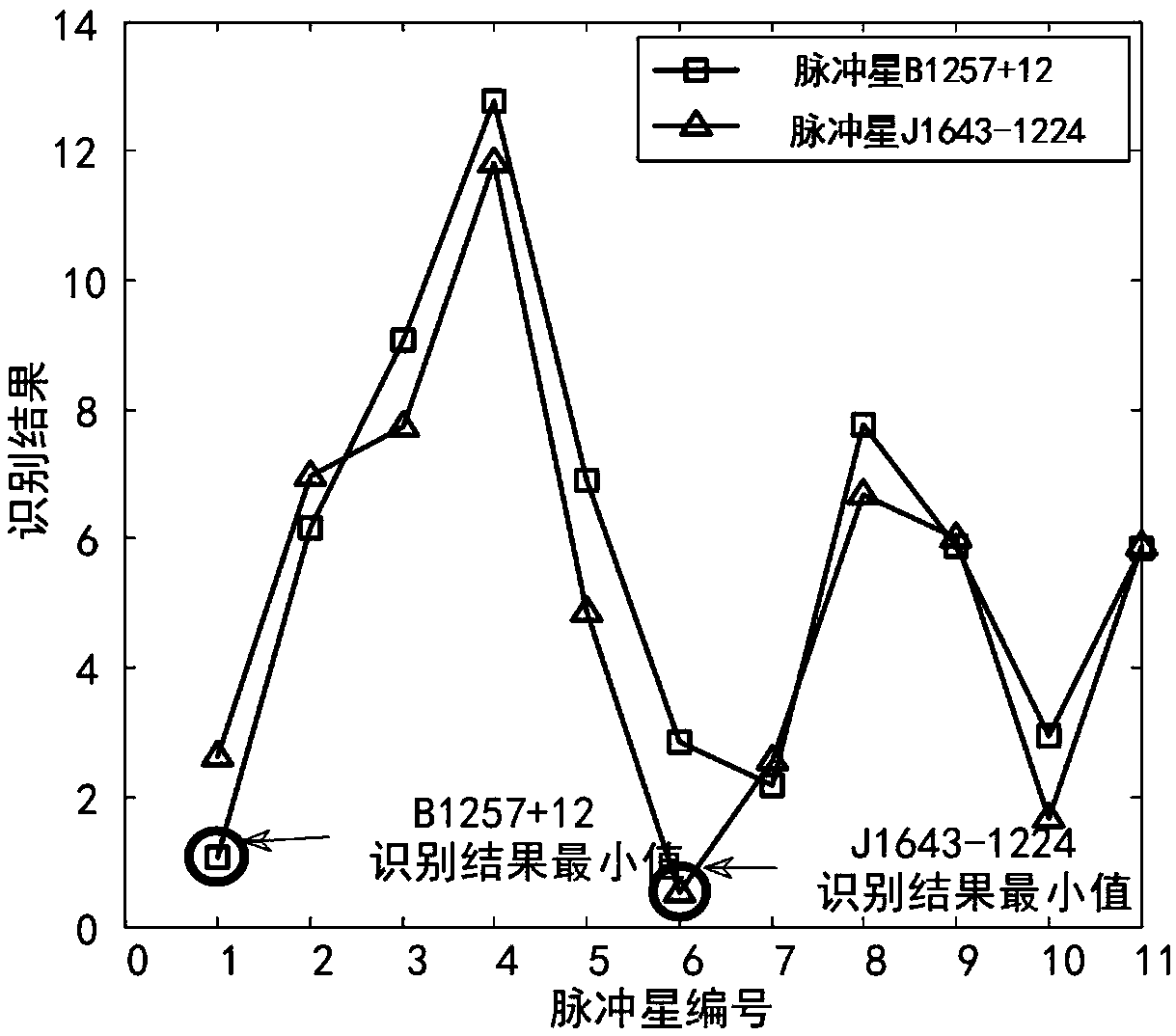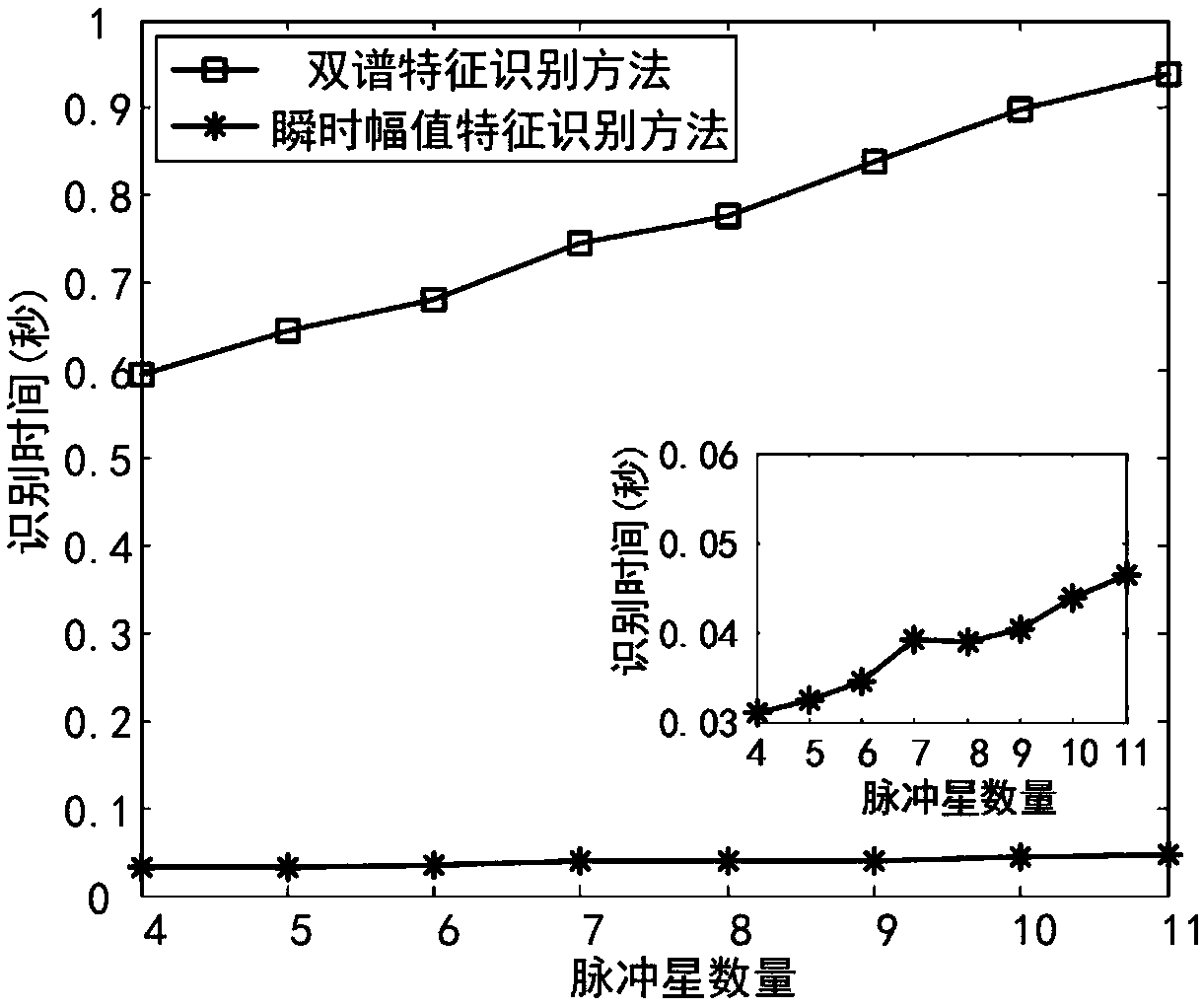X-ray pulsar recognition method based on Hilbert transformation
An identification method and X-ray technology, applied in astronomical navigation and other directions, can solve problems such as a large amount of computing time and storage space, and achieve the effect of less computing space and storage space, effective identification effect, and suppression of high-frequency noise.
- Summary
- Abstract
- Description
- Claims
- Application Information
AI Technical Summary
Problems solved by technology
Method used
Image
Examples
Embodiment Construction
[0020] The specific implementation manner of the present invention will be described below in conjunction with the examples and accompanying drawings.
[0021] Execution step 1: First, incorporate the standard profile data of 11 observed X-ray pulsars provided by EPN into the navigation database. Therefore, the collection of observed X-ray pulsars is: {B1257+12, B1953+29, J0621+1002, J1012+5307, J1518+4904, J1640+2224, J1643-1224, J1713+0747, J1730-2304, J1744- 24A, J2051-0827}, attribute the samples of this set to the classes numbered {1,...,11} respectively.
[0022] Step 2: Extract the instantaneous amplitude feature vector of the observed contour signal, and use the minimum distance classifier to calculate the distance between it and each standard contour feature vector to obtain a set of identification space distances.
[0023] Step 3: Select the X-ray pulsar serial number corresponding to the minimum value in the set as the identification result.
[0024] Table 1 Calcu...
PUM
 Login to View More
Login to View More Abstract
Description
Claims
Application Information
 Login to View More
Login to View More - R&D
- Intellectual Property
- Life Sciences
- Materials
- Tech Scout
- Unparalleled Data Quality
- Higher Quality Content
- 60% Fewer Hallucinations
Browse by: Latest US Patents, China's latest patents, Technical Efficacy Thesaurus, Application Domain, Technology Topic, Popular Technical Reports.
© 2025 PatSnap. All rights reserved.Legal|Privacy policy|Modern Slavery Act Transparency Statement|Sitemap|About US| Contact US: help@patsnap.com



